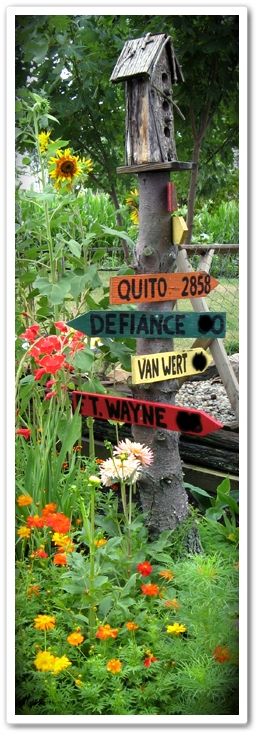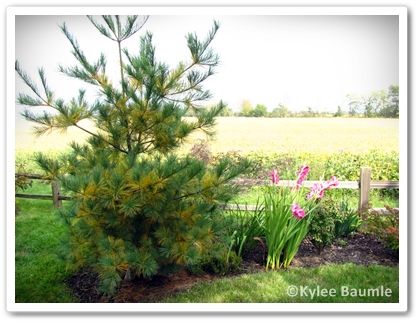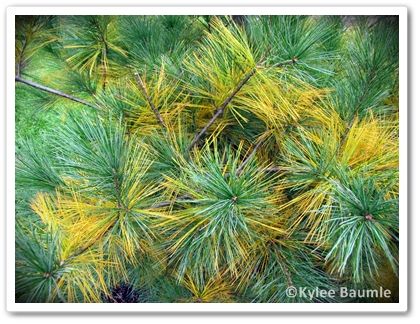A few years ago, we lost a white pine tree. It seemed like one day it was fine and the next it was dead. Of course things seldom happen that way, and we really don't know what happened with this particular white pine. But we cut most of it down and used it as a directional and pedestal for a bird house in the garden.
After that, we watched our other pines more closely. In the fall, we noticed that they had yellowing of some of the needles, which then fell off. Of course, we feared the worst - that we were going to lose yet another pine tree or two.
It turns out that our fears were unfounded in this instance. It's perfectly normal for white pine trees to do this. In the fall, they shed older needles. Have you ever walked through the woods where pine trees grow? On the forest floor are plenty of needles that were shed from those pine trees, creating a nice mulch for winter.
Speaking of using pine needles for mulch, I use them around my azaleas, blueberries, hydrangeas, and lingonberries. Pine needles add acid to the soil as they break down and these plants like that. In fact, one year, I conducted an experiment with the hydrangeas to see if I could get them to bloom blue.
 |
| Endless Summer® Hydrangea macrophylla 'Bailmer' |
As the summer progressed, subsequent blooms became more and more pink. Had I continued to add fresh pine needles all summer, I'm sure they would have continued to bloom with that bluish tint.
Besides helping to change the color of hydrangea blooms, you can use pine needles to mulch these acid-loving plants:
- Azalea
- Holly
- Rhododendrons
- Blueberry
- Camelia
- Dogwood
- Gardenia
- Lily-of-the-Valley
- Lupine
- Magnolia
- Pachysandra
- Phlox
- Pieris
- Raspberry
- Strawberry



















 "Bejeweled"
"Bejeweled"



6 comments:
You're not the only one who panicked over yellow needles on white pines at first, all mine are doing their yellow needle thing right now. Now I know it's a regular occurrence. I love the pine straw for mulch and add to it. So easy to move while planting, and holds the soil while watering.
Say hi to your mom!
Granny Pruett use to bury scraps of iron under hers to change the color.
It is actually a myth that pine needles (and oak leaves, for that matter)cause the soil to become more acidic. I have been a docent at a native plant garden for years and one of the first things they taught us was that everything is neutral on the pH scale by the time it breaks down. In the Northeast we have acidic conditions due primarily to the granite bedrock and acid rain. I use pine needles to mulch my bulbs and the soil is no more acidic in that bed than in others. Live and learn!
Kristi's comment is interesting. I've always thought pines did increase pH enough to make a difference in acid-loving plants, and certainly have seen anecdotal evidence of it. My mother has the bluest hydrangeas in Minnesota outside of a public garden in a spot that formerly was the home to a huge pine tree. Something to check out!
P.S. -- My pine is also yellowing and shedding needles like craxy.
Here is a reference from the University of Wisconsin Extension explaining (fairly clearly) about how the idea of pine needles making soil acidic probably got going. Take a look: http://wood.uwex.edu/2010/11/18/pine-needles-cause/
Rhonda ~ It was a little disconcerting at first, wasn't it? I sure will tell my mom you said hi! :-)
That's interesting, Kristi. Thanks for posting the reference. I'm really wondering why my hydrangea bloomed blue the following spring, because we NEVER have blue hydrangeas here, ever. Always pink. And I didn't do anything differently other than the pine needle thing. I didn't do it the following year and I didn't have blue blooms the spring after that. It's a mystery!
Post a Comment